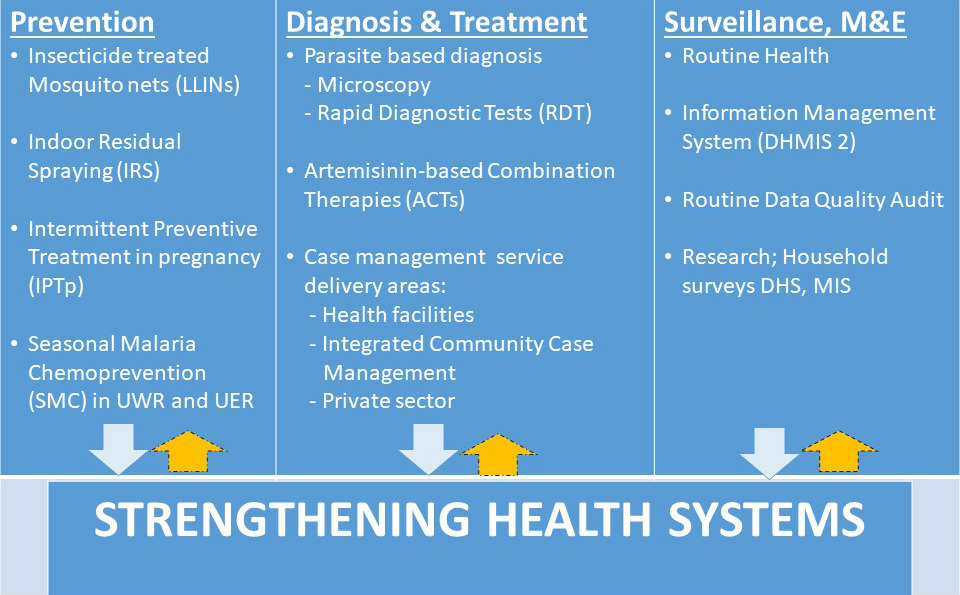National Malaria Control Programme
Attempts to control malaria in Ghana began in the 1950s. Eradication methods then included massive drain construction, chloroquine impregnated salts, aerial spraying and weekly swallowing of daraprim called “Sunday Sunday” medicine as preventive care. Despite government efforts between 1960 and 2000, malaria continued to be one of the leading causes of premature death in the country.
The establishment of the Malaria Control Programme has changed the scene. Known at first as the Malaria Control Unit, it was under the Public Health Department of the Ministry of Health. It is now located under the Disease Control Unit.
The government launched an aggressive Roll Back Malaria (RBM) initiative in 1999 that emphasized the strengthening of health services through multi and inter-sectoral partnerships and making treatment and prevention strategies more widely available. In the year 2000, the first National Malaria Strategic Plan (2000-2010) was developed with the goal to reduce malaria specific morbidity and mortality by 50% by the year 2010 thereby involving a broader group of stakeholders.
Since that time, new and effective interventions such as treatment of uncomplicated malaria using artemisinin-based combination therapy (ACT), malaria prevention in pregnancy through use of sulfadoxine-pyrimethamine (SP), and indoor residual spraying (IRS) emerged.
The Abuja declaration of May 2006 aimed at achieving and sustaining universal access to appropriate interventions for all populations at risk of malaria. A second strategic plan (2008-2015) was developed to take care of these new developments as well as the Millennium Development Goals (MDGs). The National Malaria Control Strategic Plan for 2014-2020 states the overall goal of the National Malaria Control Program in Ghana as “to reduce the malaria morbidity and mortality burden by 75% (baseline 2012) by the year 2020”.
The main priority program areas are:

The specific objectives are as follows:
- 100% of households will own at least one Insecticide Treated Net (ITN)
- 80% of the general population will sleep under ITNs
- Increase the number of children under-five and pregnant women sleeping under treated net from current levels to 85%
- 100% of the pregnant women shall be on appropriate Intermittent Preventive Treatment and receive at least two doses
- 90% of all structures in targeted districts will be covered through IRS
- 100% of health facilities will provide prompt and effective treatment using ACTs
- 90% of all patients with uncomplicated malaria will be correctly managed at health facilities using ACTs
- 100% of communities will have access to community-based treatment for uncomplicated malaria
- 90% of caretakers and parents will be able to recognize early symptoms and signs of malaria
- 90% of children under five years of age with fever will receive an appropriate ACT within 24 hours of onset
This goal is to be achieved through overall health sector development, improved strategic investments in malaria control, and increased coverage towards universal access to malaria treatment and prevention interventions. A lot has been achieved ever since.
